Hit Driver for Seniors: Tips for Older Golfers
How to Hit Driver for Seniors: Finally Pick Up More Speed and Hit Powerful Drives with Advice Tailored to You
The best advice for how to hit driver for seniors is not the same as the tips you usually see in articles and videos. You see, traditional coaching draws from the techniques used by the best players on the Tour.
Players who are in incredible shape. Golfers who dedicate every waking moment of their lives to golf. Guys and gals who are . . . well . . . young.
Our bodies change as we get older. We have less flexibility and a smaller range of motion. Those of us who are more “experienced” can no longer rely on traditional advice for generating speed.
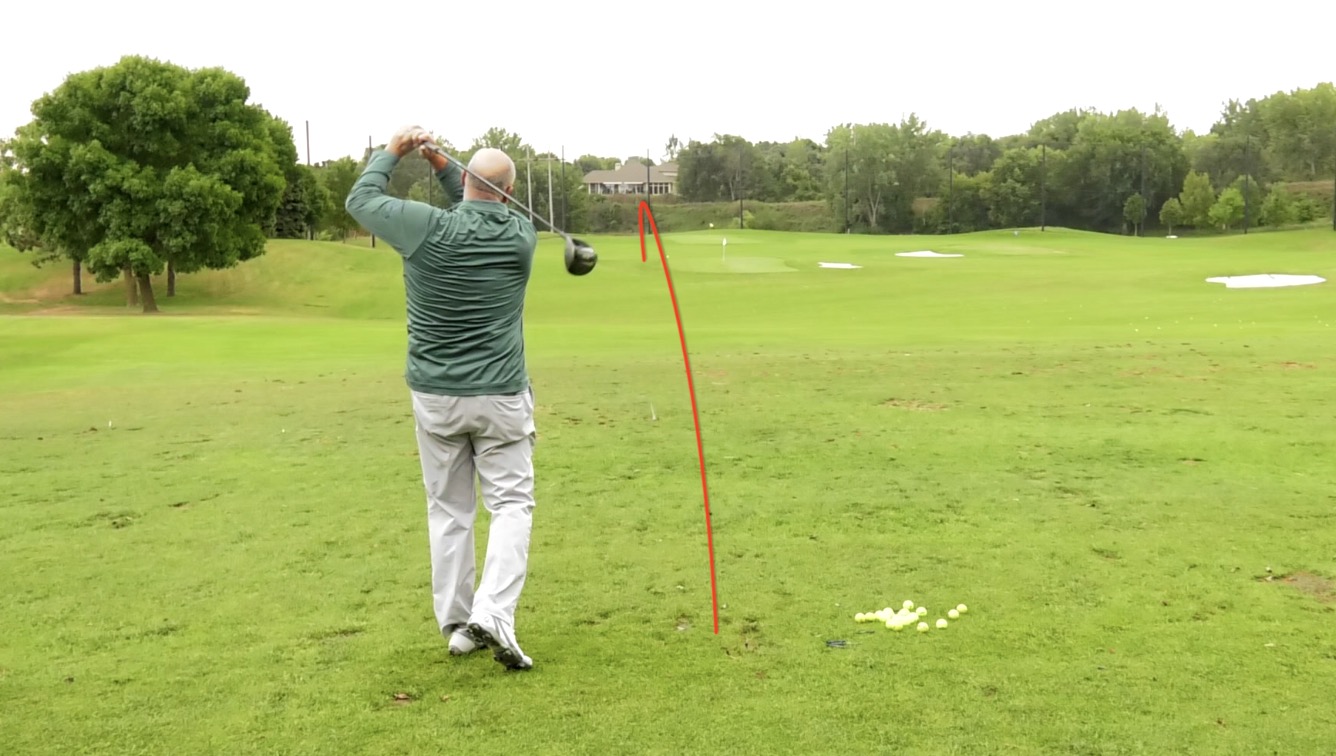
When we try to follow the same tactics as the pros, we either fall short or injure ourselves.
So, if you’re struggling at the tee box, it’s not because you’re doing everything wrong. More likely, the problem is that you’re following driver tips that aren’t designed for you.
The first thing I do when I work with a new student is ask myself, “What is this person capable of? What are their physical strengths and limitations?” Then, I tailor my coaching to their needs. We’re all capable of playing a solid game as long as we’re working to our own abilities.
I am going to walk you through the process of how to hit a driver for seniors. We’ll hit three important areas:
- Setup
- Backswing
- Power sources
Then, I’ll add a bonus drill for generating more arm speed. By the time we’re done, you’ll have a better idea for how to hit long, solid drives using the body you have.
Adapting Your Driver Setup
The first thing we want to look at when we talk about how to hit driver for seniors is your setup. This is where you make some accommodations for limited golf mobility.
Now, when I work with my students on driver setup, I like to use the LiveView camera. If you’re not familiar with it, LiveView is an incredible device that allows you to watch your own swing in real time from any angle.
As a coach, what I love about LiveView is that I can add visual aids to my student’s playback screen. When I’m working on driver setup with older golfers, I draw two red lines—one off each hip traveling straight down to the feet.
If you have a LiveView yourself, I recommend you do the same. If you don’t, just visualize these lines.
Now, let’s talk about traditional advice about driver setup and how we adjust it for experienced and senior golfers.
Traditional Coaching
For younger golfers, the standard advice is to square the feet at setup. This means that in the LiveView image, the golfer will see those two red lines leading down from the hips through the center of the feet.
The golfer’s feet are parallel to one another, pointed in the direction of the ball. If you drew a straight line from toe to toe, that line would run parallel to the target line.
This is a beautiful driver setup. But if you’re an older golfer, it comes with some significant hazards.
How to Hit Driver for Seniors: Setup
You have probably already noticed that you’re not getting the same rotation you used to get using this traditional driver setup. So, we’re going to make a couple small changes that help you find a wider range of motion in your backswing.
First, flare your toes. Think of the red lines on your (real or imaginary) LiveView. Rotate your toes outward slightly so that the red lines lead to the insides of your heels instead of the center of your toes.
This simple flare helps you find better hip rotation.
Then close your stance. To do this, you step your trail foot back away from the golf ball just slightly. As you do this, close your hips, too. Allow that trail hip to follow the lead of the trail foot.
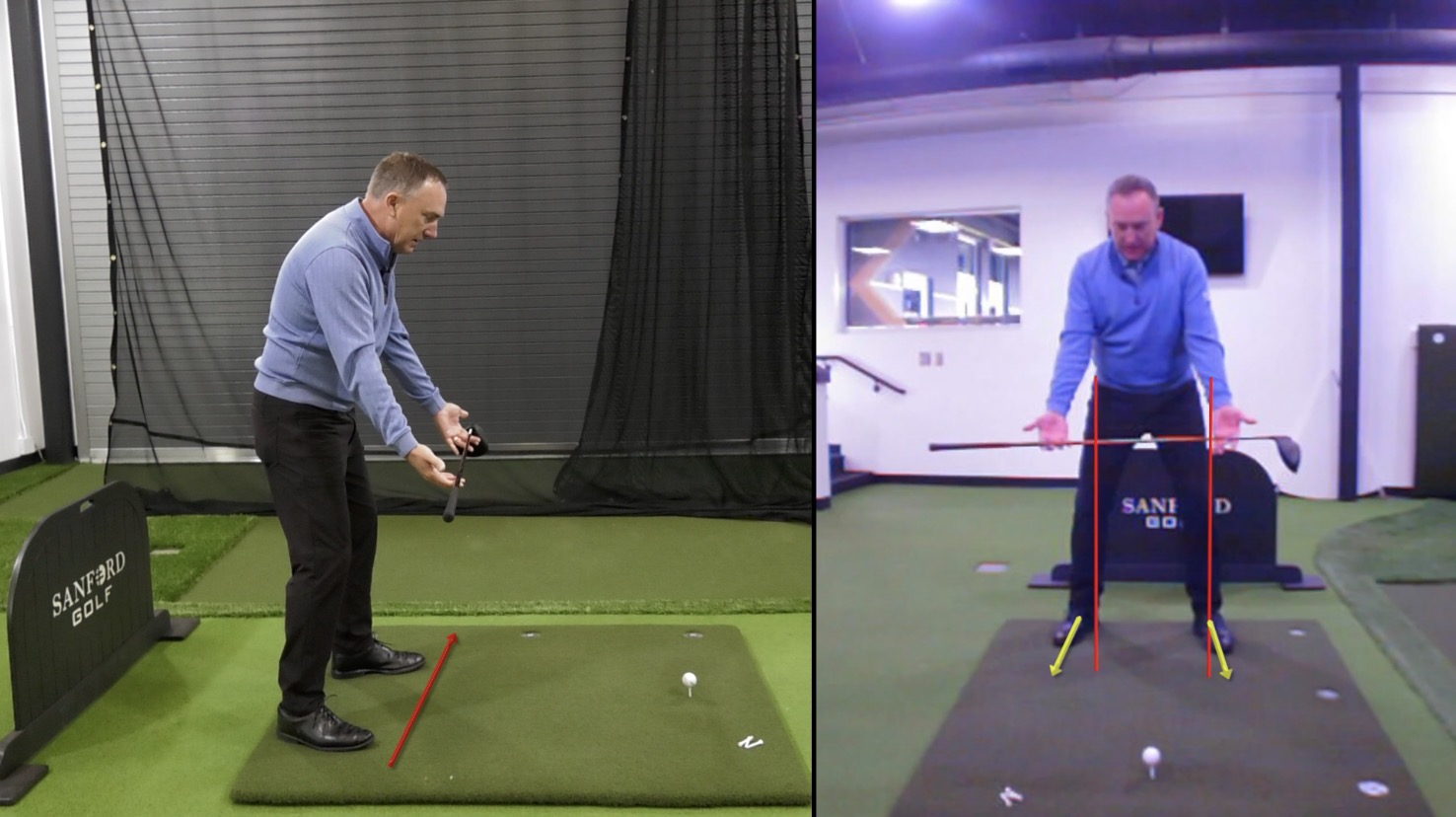
What is the purpose of this move?
Well, let’s say you want about 45 degrees of hip turn and 90 degrees of shoulder turn in your backswing. (It might make you achy just thinking about it!)
Closing your stance puts you in a position where your hips are already rotated about 15 degrees at setup. It’s a step towards splitting the difference. You don’t have to turn quite as far on the backswing, and all it costs you is a completely doable rotation at setup.
Now, let’s talk about what happens on the backswing.
Backswing Adjustment: The Vertical Line System
As many golfers know, swing length is crucial for generating swing speed. And we find that length in the backswing.
Once again, traditional advice does not help experienced and senior golfers get the length they need. This is why a shorter swing length is among the biggest distance killers for older golfers.
But—once again—there is an easy adjustment that will help you get a nice, long swing, faster speed, and longer drives.
Traditional Coaching
If you watch the best Tour players, you see them work their lead arm low, back, and behind them on the backswing. We call this a “deep” backswing. It’s a maneuver that definitely achieves length and ensures solid drives.
Or, it does if you’re young, anyway.
For those of us who have been around a bit longer, taking that lead arm low on the backswing really limits our mobility.
Try that motion right now. Watch yourself in your LiveView or in the mirror. You will probably notice that you’re not going back as far as the young guys and gals you see on the Tour.
So let’s talk about how to hit driver for seniors. This is the method that’s going to help you. I call it the Vertical Line System.
How to Hit Driver for Seniors: Backswing
You know the formula: more length in the backswing equals more speed. And if body rotation can’t give us that length, we need to get it another way.
We need to work with the direction of the swing.
I encourage my senior students to take their lead arm back and up on the backswing. Essentially, they follow a more vertical line swing plane.
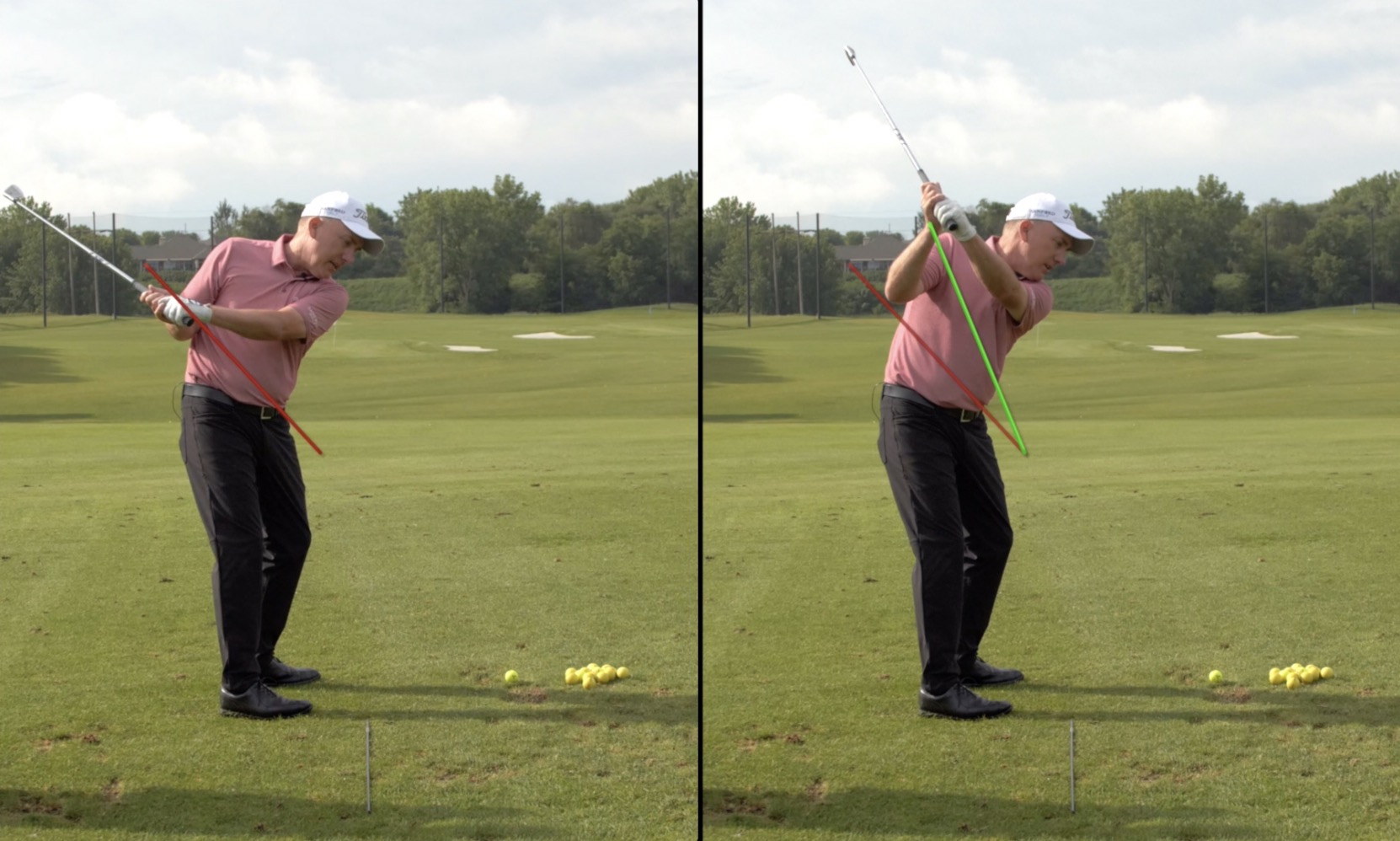
Try it right now. Can you feel the difference? Are you getting a little more length with a little less pain?
The Vertical Line System is such a simple concept, but it’s real eye-opener for a lot of my golfers. Give it a shot the next time you’re at the driving range. I promise you’ll start seeing longer drives.
Your 3 Power Sources
The final tip I have for how to hit driver for seniors has to do with the setup. But in order to understand this strategy, it helps to understand its importance.
You see, you’re working with three potential power sources in any athletic motion. When we talk about power sources, we’re talking about the types of movement that generate strength and speed. The three power sources are:
- Rotation. As a golfer, you are very familiar with the value of this motion.
- Vertical. This type of movement is at play a lot in basketball, volleyball, and tennis serves.
- Side-to-Side. Also called “sway,” this is a matter of shifting weight. Think of a quarterback throwing a ball. They start with more weight on the lead foot, shift to the trail foot, then launch the ball with the power of their weight behind them.
As a mature golfer, rotation and vertical are not as available to you as they used to be. So, we’re going to make the most of that third type of movement: the side-to-side.
The Power Key for How to Hit Driver for Seniors
If you follow our articles and videos, you’ll probably recognize this next strategy. It’s important advice for all players. But it is absolutely essential as a golf tip for senior golfers. This is how you pack your driver shots with more power.
As you take your driver setup, bump your lead hip towards the target. This allows you to access that side-to-side power source. You want about 60% of your weight on the lead foot, 40% on the trail foot. This should happen naturally with that hip bump.
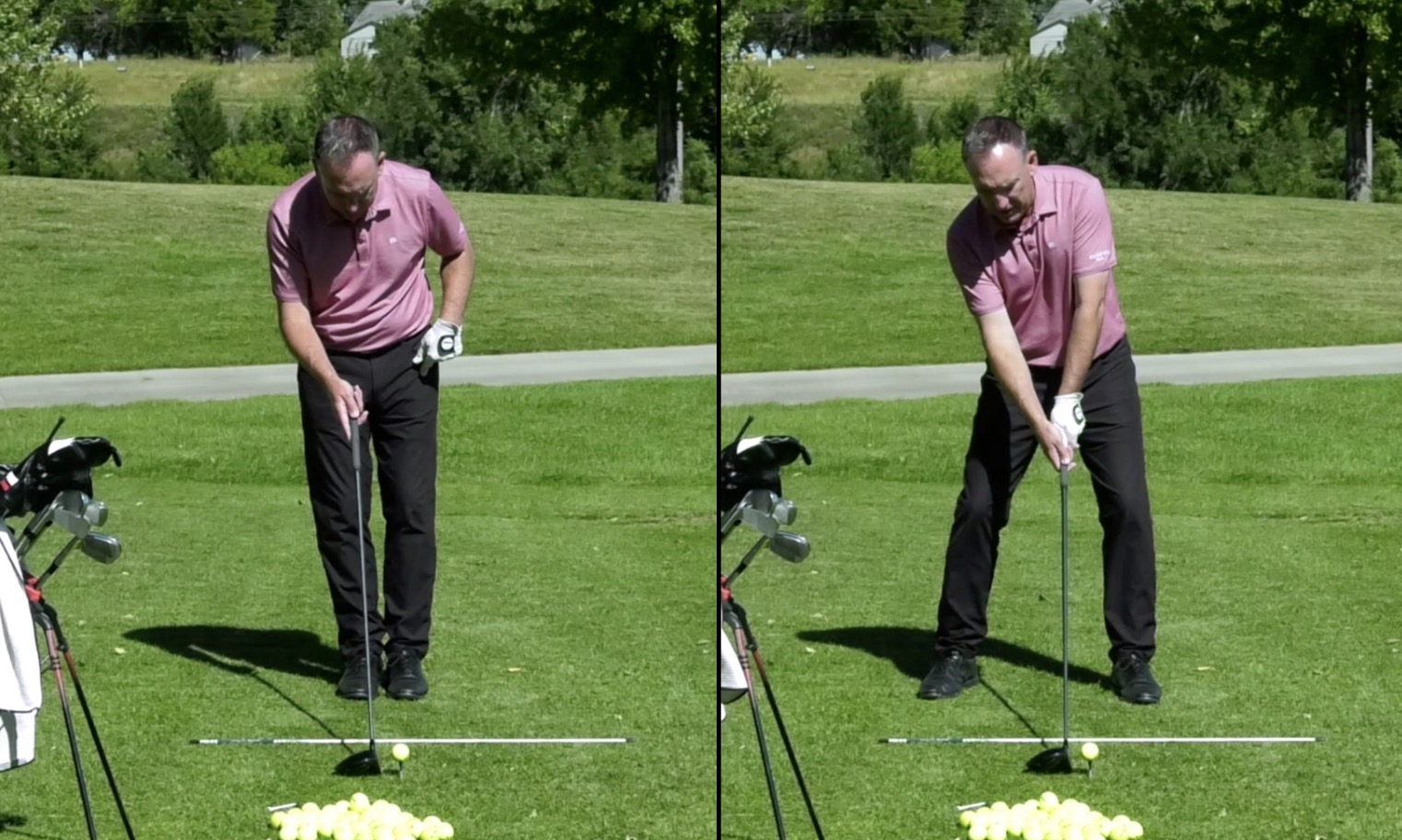
As you take your backswing and rotate away from the target, shift that 60% weight into your trail foot. This gives you the room to push that weight—and power—back towards the lead foot as you swing through.
This move helps you generate speed, load the club head, and send the golf ball sailing down the fairway.
Now that you have a lot more insight regarding your driver swing as an older golfer, let’s talk about where to go from here.
How to Hit Driver for Seniors: Checklist & Bonus Drill
I just dumped a lot of information on how to hit driver for seniors. To simplify, here’s a quick checklist to guide you the next time you’re on the golf course.
Driver Checklist
- At setup:
- Flare your toes
- Close your stance
- Close your hips
- Bump the lead hip toward the target
- Keep 60% of weight in the lead foot
- On the backswing:
- Shift weight to the trail foot as you rotate back
- Bring the lead arm back and up on an almost-vertical swing plane
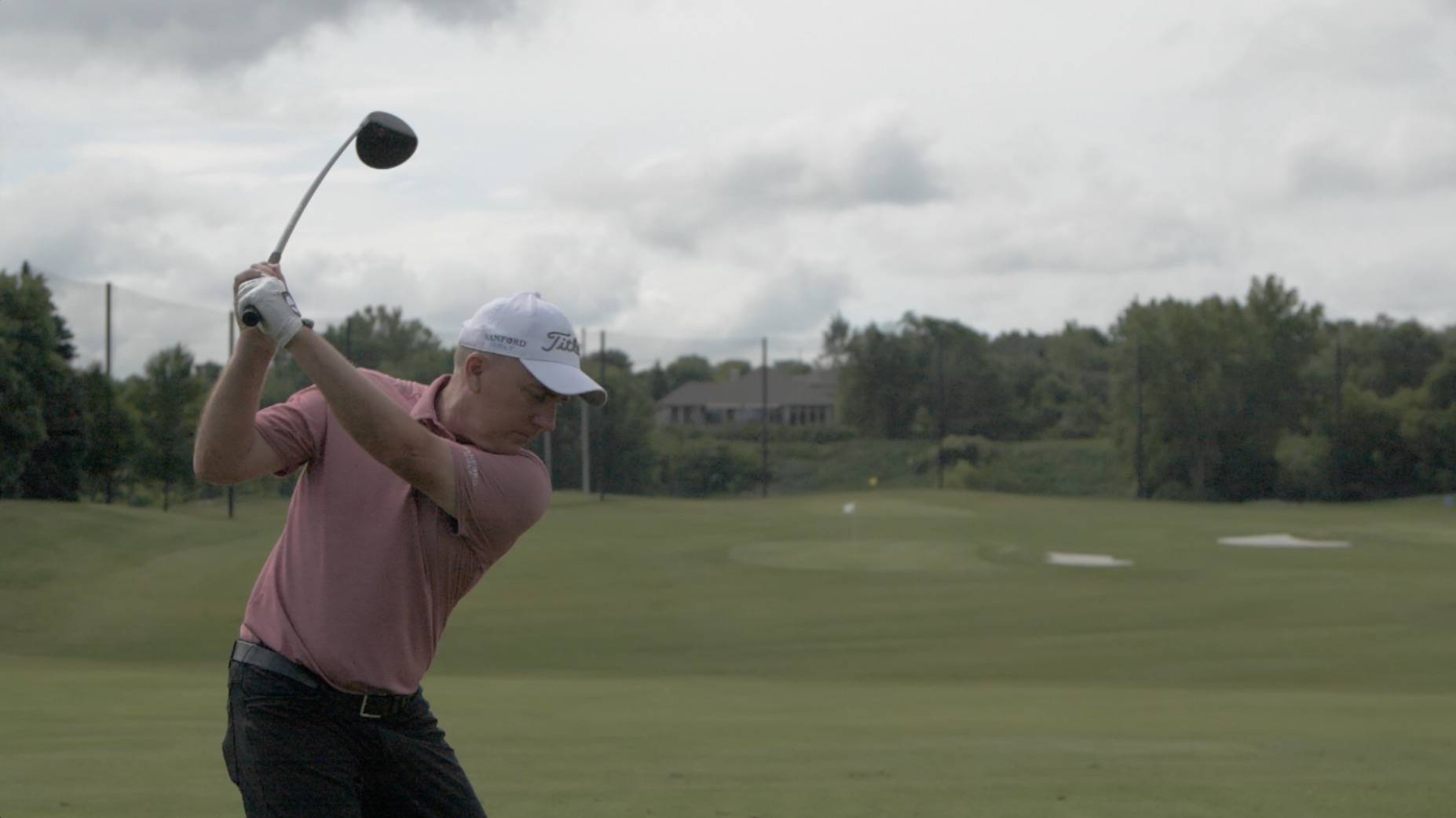
As a bonus, I’d like to share a great drill that will help you find a little more range and freedom in your arms. I truly cannot explain why this drill works so well, but it does.
Hover Drill
- Take your driver setup, but hold the club out so the driver head is about shin-high, hovering above the golf ball.
- From this position, take three practice swings. (I call this a “three-setter.”) In these practice swings, you should immediately feel more freedom and speed in your arms.
- After the three-setter, hover the club head behind the golf ball.
- Take your regular driver shot from there.
This drill should help you discover a little more motion in your arms.
Learn More
These tips should give you a solid foundation for practicing and improving your driver shots as a more experienced golfer. But when you’re ready to go a little more in-depth, I recommend checking out my FREE Power Clinic Golf Series.
Power Clinic Golf is a six-part series that confronts the techniques that are killing your game. It’s based on the same principle as this article:
Different golfers require different coaching. If you haven’t been seeing the distance and power you want after applying the most popular golf advice, it’s probably because that advice isn’t for you. And there’s a good chance Power Clinic Golf has the guidance you actually need.
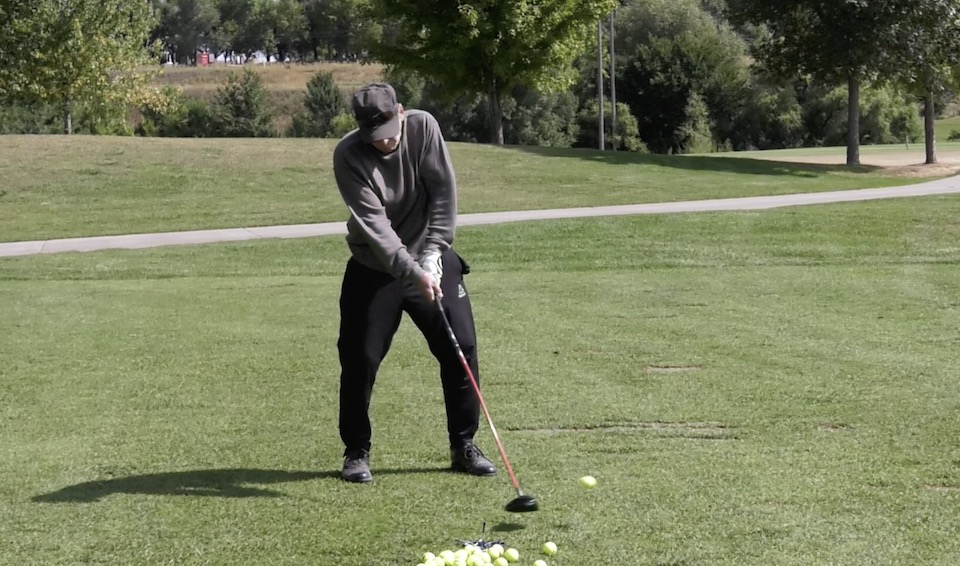
Bottom line: whenever you receive golf instruction, ask yourself, “Who is this for?”
Is it for a golfer who shares your strengths and limitations? Your level of fitness? Your age or experience level?
Or is it advice that’s shows you how DJ does it?
I promise you, you will always get the best results by swinging your swing.
Has This Been Helpful?
My goal is to provide clear advice that helps you have more fun on the golf course. So jump into the comments and let me know how we’re doing!
Did this help? Do you have any questions? Is there anything here you just can’t agree with? I’m always up for a good golf debate!
For more in-depth golf tips, visit us at GreatGolfTipsNow.com. This golf instruction is completely free and packed with detailed advice to help you play better golf!


Toes out is great- right foot back a little is also great – to swing upright a little I thy to make sure my left shoulder goes under my chin- then I don’t worry about swinging a little more upright – it is automatic – 3rd – instead of shifting weight, I do 2 things – tilt my body back a little tilting from the waist and 2nd which is the best advice – I watch the back of the golf ball – that keeps me behind the ball instead of swaying in front of the ball. That is the best advice I have ever received and it really works too. Not critical of what you are saying, but from someone who is 75 years young, these are simple things I try to think of and not overcomplicate anything.
John,
Thanks for posting and the kind words. The combo of toes out and right foot back have helped many of our players. Excited to share more great content with our fellow golfers!
Todd,
The instructions on distance for the experienced golf is great. Can you address two issues. One, when taking the club back I noticed you trail elbow appeared to be disconnected from your body and two, how do you keep your head still over the ball as you shift (turn) your weight to the trail side. Thanks for clarifying. Great videos and has helped as I get more experienced (aging) and to keep my single digit handicap.
Bob,
Thanks for the kind words and questions. The trail elbow separating from the side allows for more movement and a longer swing. This is key for senior golfers. When moving your weight to the trail side be sure it stays on the inside of the foot. This will ensure a proper pivot. Hope that helps!
HI Todd,
In a previous video about drawing the driver you referred to a vertical finish with the handle of the club pointed out to the right of the target line. Today I watched the “senior” video mentioned here and you referred to it again. I was fortunate to get out to play today and I tried it. Man, it was like magic. I hit 14 of 18 fairways with slightly increased distance (+10yds) and tight draws (very slight draws but draws/straight nonetheless) in windy conditions. Also, raising the handle of the club (which I think is intended to go hand in hand with the finish I mentioned) was huge. One of my partners asked me “Ok, what are you doing differently to hit the ball so well?” I replied “just been practicing a lot lately”. He then noticed me raising the handle prior to takeaway and said “Ah, I see what you’re doing”. He tried it on his next tee shot and hit a beautiful straight drive after which he said “Hey, we shouldn’t tell anyone about his and keep it our little secret”. I nearly fell over laughing. Thank you so much for the tips/advice! I just discovered your channel a few week ago and now visit every day to see if I can pick up any other helpful nuggets. Great content delivered in a very calm and useful manner. Thanks Todd, keep up the great work I’m a huge fan.
Ricky,
This is an all-time great story! Thank you for sharing, made our day. We have found our series of golf tips for the “experienced” golfer are really helping people. So cool to see! We will soon be launching an entire coaching system for the “experienced” golfer….keep an eye open for it. Thanks again!
Hi Todd
I have done everything you have suggested to get the high draw. I hit the ball high and get more distance, but the ball does not draw. It has a tendency to go right and stay right. Any suggestions on what I might be doing wrong.
Ed
Thanks for the good advice. Since the world wide golf handicap is about 20 more of this type of instruction I’m sure would be more helpful than instruction in the various golf magazines. Also what do you think of the Single Plane. swing. ( Moe Norman modified) type . Thank you again. Lindsay Laird.
Lindsay, appreciate you posting and asking the question. We belief the type of instruction should match the type of player. Not a one size fits all approach. The single plane swing is a good visual for many golfers, however the club is always changing planes/angles. The key is to get the club working on a flatter plane in the transition. Hope that helps!
Edward,
Thanks for asking. Here is a good video to watch https://youtu.be/DQWmVNlz6sU
When you slightly close your stance, where is your driver aimed? At the target or along your closed stance line?
I agree with tips 1 and 3. However swinging more vertically can increase the likelihood of an outside to in swing path for those who tend to have that swing tendency. There ways tp prevent it though. Longer clubs will increase the inside to outside swing path. That is one option. It doesn’t require a swing change except to adjust for the longer club length. Lighter graphite shafts in woods and graphite shafts in irons keep the swing weight within normal rangtes with the longer club length..
Great question Bob. When you close your stance, you will want to keep your club aimed at your target line. The closed stance is to get that path working more toward the right, with a club face that is slightly closed relative to the path.
For example, if you have a club path that is 4 degrees to the right of target line, and a face that is 2 degrees to the right of target line (at impact), your face will be closed relative to the path by 2 degrees.
Hope that helps!
Should I try to lay the club off in the downswing?
Not a big fan of laying the club off for senior golfers. We are a believer in our Vertical Line Swing https://youtu.be/4obK1N-N9qY
Your comments on older golfers swinging more upright I think is countered by the bio metrics teaching of the backswing is guided by the length of your wing span compared to your height. Trying to swing against your natural body build is bad medicine, in my opinion.
OK I’m an older golfer (73+), with a broken back (play with a back brace on). My driving distance is much shorter than it used to be,,, about 155 yards. How much should I be able to increase my distance with my driver. I usually hit straight down the middle.
Roy,
Sorry to hear of your injury. Hope you are improving! If we can get 10-15 yards, I would consider that a nice win.
I’ve adapted the “Driver tips for older golfers” (I’m 59) with renewed success with accuracy and distance. Can and should I translate a similar approach to my irons. I’ve shortened my back swing with my irons for more accuracy, but sacrifice distance. I’d like to move towards more rotation (like on my drives) to regain distance and maintain accuracy with my irons. Any advice is appreciated!
Steve Helland
Steve,
Great to hear. Yes, the same concept can be applied to all full swing shots. Check out http://www.verticallinegolf.com
Hi Todd,
Thanks for all your very useful tips.
I am an 80+ “young” golfer playing at present to around a 10 or 11 handicap in decent Summer weather !
I am interested in your more upright backswing for oder golfers, as I still find I have to swing back shallower, with my left arm across my chest, – but I am concerned that I may find it more difficult soon to continue doing so.
As soon as I try swinging more vertically however, I find it almost impossible to avoid fading, or slicing the shot.
I suspect I am not shallowing the shaft sufficiently during my downswing, but this seems to be more difficult once you are more vertical.
Can you help please ?
Theo,
Great question. Here is the full video series to help https://youtu.be/czAMI0VeSX0
The key will be to make sure you are keeping the clubface square on the takeaway. This is a good place to start.
Thanks for posting.
Thanks Todd – great advice as always.
I have a swing speed around 80MPH. Should I be looking at a Regular Flex Shaft?
Thanks
Guy
At that speed a regular flex will be best. Also make sure you have 10 plus degrees of loft on your driver to maximize carry. Good quetion.
Thank you Todd – much appreciated.
I was looking at the new smaller driver – Metalwood Colt Sprinter that you were demonstrating. Looks pretty interesting which is why I was asking about the recommended shaft.
Thanks
Guy
Hi Todd..love your videos.Can you do one on how hard to hit the ball form the sand to get various distances. Ie for a near pin and a further pin. Thankyou
Mike,
Appreciate those kind words. Here is an answer to your question https://youtu.be/pbKxGOLuAjY